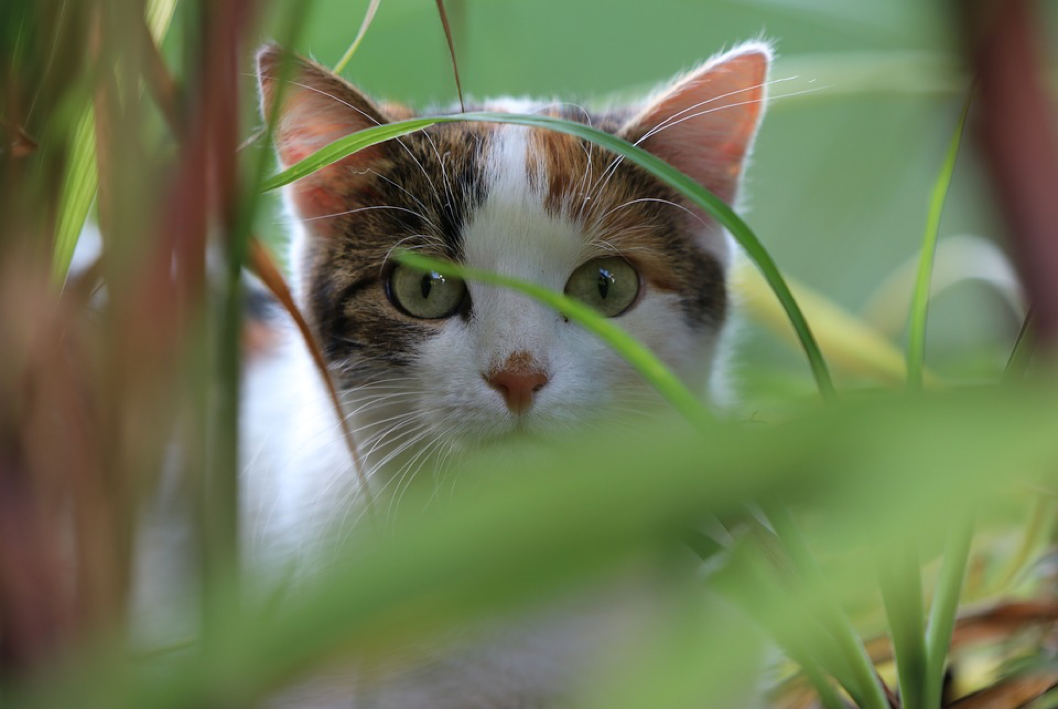Eating Your Greens: The Basics of Cat Grass
When confronted with the topic of healthy eating, we, as humans, are frequently reminded of the importance of including daily greens in our diets. Does your cat’s diet need the same?

Dr. Lori Teller, a clinical associate professor at the Texas A&M College of Veterinary Medicine & Biomedical Sciences, discusses the basics of cat grass that every cat owner should know.
“Cat grass isn’t any one type of grass but can be a combination of grasses, such as rye, barley, oat, and wheat,” Teller said. “Cat owners can buy kits at many stores to grow cat grass for their kitties.”
Most owners don’t need to rush to the store to purchase this grass for their pet, however, as it is not always necessary to complete their diet.
“Cat grass is not a required part of a cat’s diet if the food they are eating is well-balanced, but it is something that many cats enjoy,” Teller said. “Especially for indoor cats, it can be a source of environmental enrichment. In some cases, it may provide some micronutrients, such as vitamins A and D.”
The reasons cats seek out such grass are still unclear. Though veterinarians have yet to come to a consensus on one definitive answer, several theories exist.
“One theory is that cat grass is a source of fiber that can either act as a mild laxative or trigger vomiting,” Teller said. “When cats lived in the wild, they may have eaten grass to trigger vomiting to rid their stomachs of the non-digestible parts of the prey they ingested. It is also thought that the chlorophyll contained in the grass could serve as a mild pain reliever and help keep the cat’s breath fresh.”
Teller also advises that owners shouldn’t be nervous about introducing cat grass to their pet’s environment, even if it something their pet hasn’t yet encountered.
“For outdoor cats, homegrown cat grass will be safer than what they may nibble on outside because those plants may have been exposed to chemicals or water contaminated with bacteria that may cause disease,” Teller said. “While it would not be dangerous to have the cat grass freely available, if a cat seems to eat it voraciously, then it may be worth consulting with a veterinarian to determine if the cat’s diet is meeting all of its nutritional needs.”
Owners residing in multiple-pet households can also be assured that cat grass is likely a safe addition to their home.
“It is not likely that cat grass would be a problem for other animals in the household,” Teller said. “The bigger concern would be if a cat or other animal confused cat grass with other plants in the home that are potentially toxic. It is important to keep those plants out of reach of any pets.”
Ultimately, the decision to introduce cat grass to a feline friend is up to their owner. As always, cat owners should consult with their veterinarian if they are concerned about nutritional deficiencies in their cat’s diet.
Pet Talk is a service of the College of Veterinary Medicine & Biomedical Sciences, Texas A&M University. Stories can be viewed on the web at vetmed.tamu.edu/news/pet-talk. Suggestions for future topics may be directed to editor@cvm.tamu.edu.


